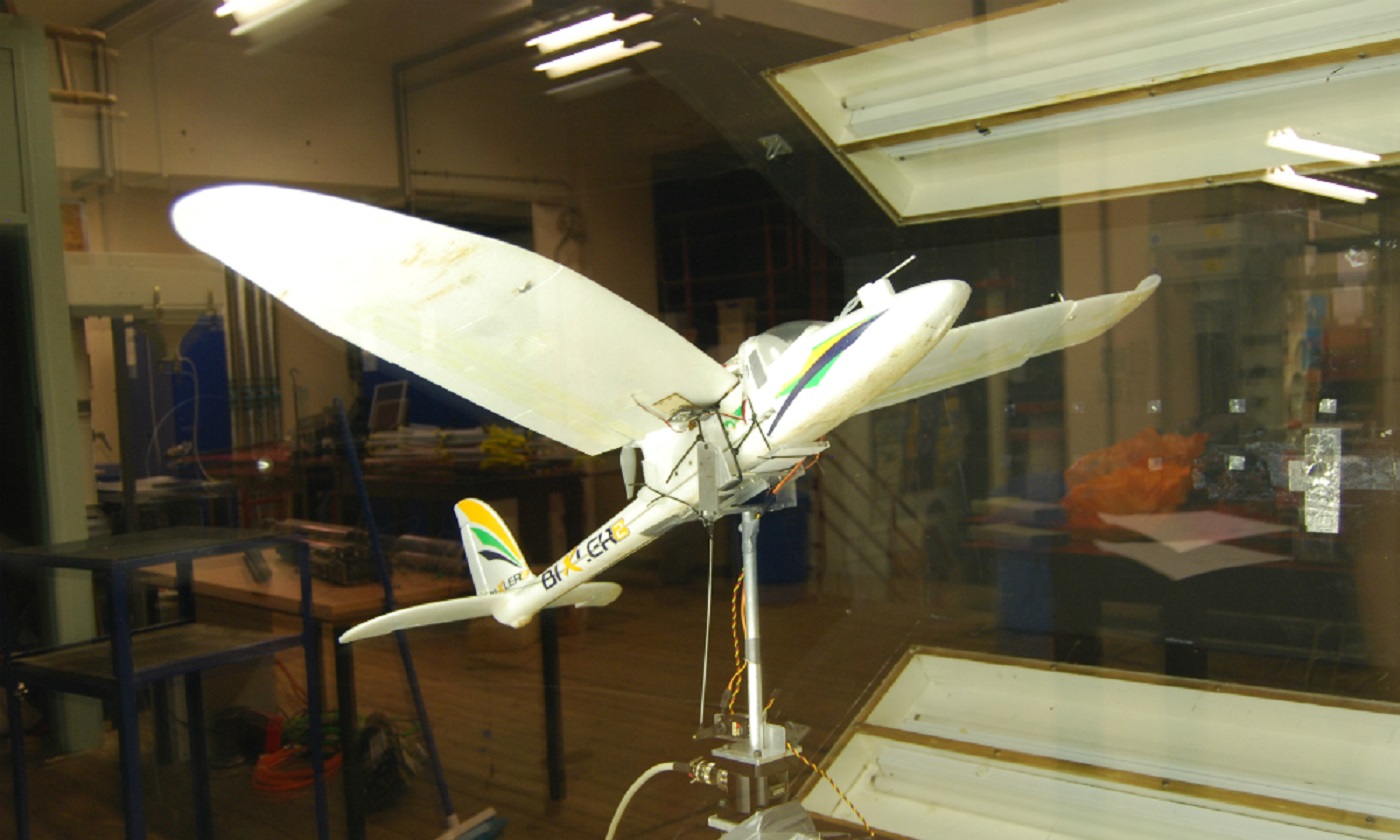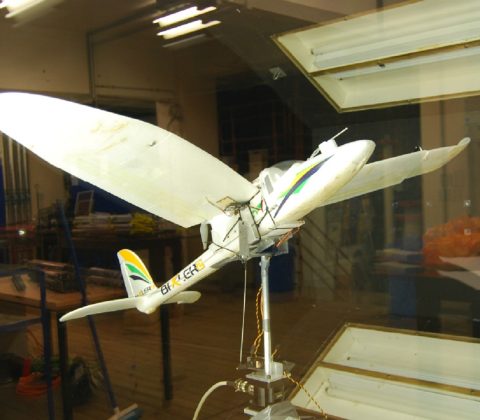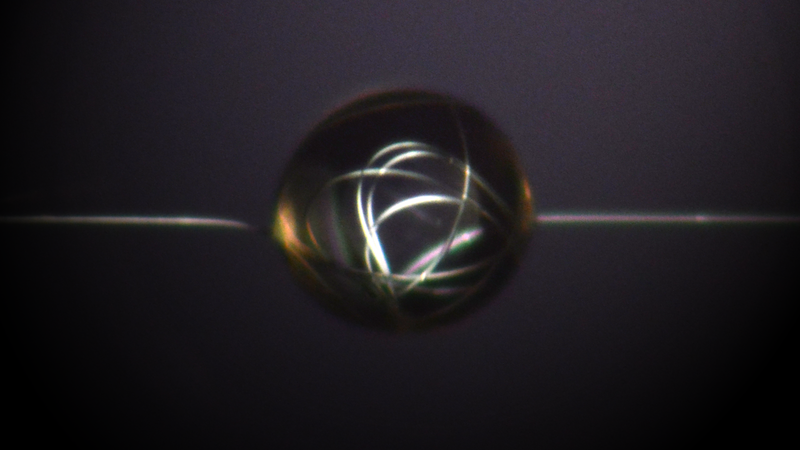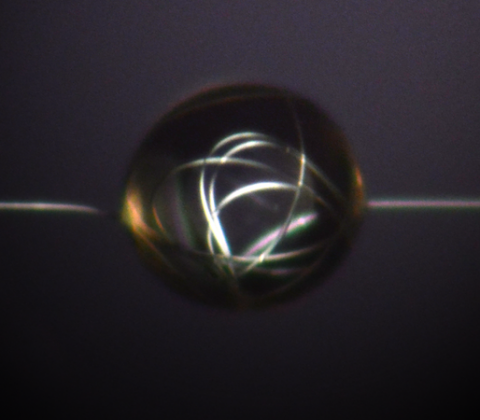Posts Tagged: Researchers
TikTok pulled a hashtag-tracking feature researchers used to study the platform
TikTok recently pulled a tool that allowed researchers and others to study the popularity of hashtags on its app. The change, first reported by The New York Times, came shortly after researchers published a report using data from the tool that criticized the company.
As The New York Times points out, the tool was one of the few publicly-accessible methods of tracking details about the popularity of specific hashtags. TikTok, like other social media companies, has made it difficult for outsiders to track how content spreads in its app.
The tool in question is a feature called Creative Center, which provides data about the popularity of hashtags to would-be advertisers and others. Researchers at Rutgers’ Network Contagion Institute had used Creative Center’s search function to track hashtags deemed “sensitive” to Chinese government interests. The researchers compared the prevalence of the hashtags between TikTok and Instagram and concluded that many “sensitive” topics were “dramatically underrepresented on TikTok” compared with Instagram.
Soon after the report was published, the researchers said the search feature in Creative Center disappeared without an explanation. “Search capacity for Hashtags has itself now been removed from the user interface entirely, which NCRI discovered to have occurred on Christmas day, days after this report’s initial release,” they wrote in an addendum to the report. They added that TikTok had also disabled direct access to a number of “sensitive” topics they had previously tracked, including hashtags related to US politics and other geopolitical issues.
In a statement to The New York Times, TikTok confirmed the change. “Unfortunately, some individuals and organizations have misused the Center’s search function to draw inaccurate conclusions, so we are changing some of the features to ensure it is used for its intended purpose,” a company spokesperson said.
The dust-up is the latest example of mounting tensions between social media companies and researchers trying to study thorny topics like misinformation. Meta has also found itself at odds with researchers, and reportedly plans to deprecate CrowdTangle, a tool widely used by researchers and journalists to study how content spreads on Facebook. X has also greatly restricted researchers’ access to data since Elon Musk took control of the company, making its once open APIs prohibitively expensive to most groups.
In TikTok’s case, the company may be particularly sensitive to what it considers improper use of its tools. The company has for years denied that it aligns its content policies with the interests of the Chinese government as numerous government officials have called for the app to be banned. More recently, the company faced increased scrutiny over its handling of content related to the Israel-Hamas war — criticism that was also fueled by what the company said was an inaccurate portrayal of hashtag data.
That said, the company has made some concessions to researchers. TikTok began offering an official Research API to some academic institutions last year, and reportedly plans to make the tools available to some civil society groups that have questioned the company’s content moderation practices.
But for researchers, the move to abruptly cut off a tool will likely fuel more questions about just how willing the company is to work with them. “This lack of transparency is of deep concern to researchers,” the NCRI researchers wrote.
This article originally appeared on Engadget at https://www.engadget.com/tiktok-pulled-a-hashtag-tracking-feature-researchers-used-to-study-the-platform-015454077.html?src=rss
Engadget is a web magazine with obsessive daily coverage of everything new in gadgets and consumer electronics
Researchers made VR goggles for mice to study how their brains respond to swooping predators
Believe it or not, scientists have been using virtual reality setups to study brain activity in lab mice for years. In the past, this has been done by surrounding the mice with flat displays — a tactic that has obvious limitations for simulating a realistic environment. Now, in an attempt to create a more immersive experience, a team at Northwestern University actually developed tiny VR goggles that fit over a mouse’s face… and most of its body. This has allowed them to simulate overhead threats for the first time, and map the mice’s brain activity all the while.
The system, dubbed Miniature Rodent Stereo Illumination VR (or iMRSIV), isn’t strapped onto the mouse’s head like a VR headset for humans. Instead, the goggles are positioned at the front of a treadmill, surrounding the mouse’s entire field of view as it runs in place. “We designed and built a custom holder for the goggles,” said John Issa, the study’s co-first author. “The whole optical display — the screens and the lenses — go all the way around the mouse.”
In their tests, the researchers say the mice appeared to take to the new VR environment more quickly than they did with the past setups. To recreate the presence of overhead threats, like birds swooping in for a meal, the team projected expanding dark spots at the tops of the displays. The way they react to threats like this “is not a learned behavior; it’s an imprinted behavior,” said co-first author Dom Pinke. “It’s wired inside the mouse’s brain.”
With this method, the researchers were able to record both the mice’s outward physical responses, like freezing in place or speeding up, and their neural activity. In the future, they may flip the scenario and let the mice act as predators, to see what goes on as they hunt insects. A paper on the technique was published in the journal Neuron on Friday.
This article originally appeared on Engadget at https://www.engadget.com/researchers-made-vr-goggles-for-mice-to-study-how-their-brains-respond-to-swooping-predators-215927095.html?src=rss
Engadget is a web magazine with obsessive daily coverage of everything new in gadgets and consumer electronics
Researchers developed a gene-editing technology that reduces ‘bad’ cholesterol
In a trial run by Verve Therapeutics, a Cambridge–based biotech company, researchers discovered that a single infusion of a gene-editing treatment called VERVE-101 was able to reduce cholesterol levels in patients. This treatment was tested in individuals with hereditary conditions that made them susceptible to developing clogged arteries and heart attacks. Scientists were able to use CRISPR editing techniques to tweak liver gene cells. The researchers “turned off” a cholesterol-raising gene called PCSK9, which is found in the liver, in order to lower LDL-C — sometimes called “bad” cholesterol — which causes plaque to build up in arteries in the first place.
PCSK9 was lowered by as much as 84 percent in the cohorts that received higher infusion rates of the treatment. At those higher treatment doses, Verve scientists said that the reduction of those LDL-C-related proteins lasted 2.5 years in previous studies on primates.
From a clinical standpoint, this gene editing therapy has the potential to disrupt the current standard treatment for high cholesterol. The current go-to’s include prescription statins and PCSK9 inhibitors, but they require strict adherence and can have bad side effects like muscle pain and memory loss.
CRISPR, while seemingly miraculous, is a long way from replacing daily medications though. According to Nature, two of the 10 participants in the study suffered from a “cardiovascular event” that coincided with the infusion. Verve says one was not related to the treatment at all and the second was “potentially related to treatment due to proximity to dosing.” The use of a gene-editing technology will always carry some risk because the edits could occur elsewhere in the genome.
Before a single infusion therapy for high cholesterol can reach consumers, the FDA mandates that the treatment will need to be studied for up to 15 years. Verve recently received FDA clearance for an Investigational New Drug Application for VERVE-101, meaning that the company can begin to conduct trials in the US. The current trials in New Zealand and the United Kingdom will look for willing clinical trial participants to expand the study.
This article originally appeared on Engadget at https://www.engadget.com/researchers-developed-a-gene-editing-technology-that-reduces-bad-cholesterol-170040293.html?src=rss
Engadget is a web magazine with obsessive daily coverage of everything new in gadgets and consumer electronics
Researchers use magnetic fields for non-invasive blood glucose monitoring
Synex Medical, a Toronto-based biotech research firm backed by Sam Altman (the CEO of OpenAI), has developed a tool that can measure your blood glucose levels without a finger prick. It uses a combination of low-field magnets and low-frequency radio waves to directly measure blood sugar levels non-invasively when a user inserts a finger into the device.
The tool uses magnetic resonance spectroscopy (MRS), which is similar to an MRI. Jamie Near, an Associate Professor at the University of Toronto who specializes in the research of MRS technology told Engadget that, “[an] MRI uses magnetic fields to make images of the distribution of hydrogen protons in water that is abundant in our body tissues. In MRS, the same basic principles are used to detect other chemicals that contain hydrogen.” When a user’s fingertip is placed inside the magnetic field, the frequency of a specific molecule, in this case glucose, is measured in parts per million. While the focus was on glucose for this project, MRS could be used to measure metabolites, according to the Synex, including lactate, ketones and amino acids.
Matthew Rosen, a Harvard physicist whose research spans from fundamental physics to bioimaging in the field of MRI, told Engadget that he thinks the device is “clever” and “a great idea.” Magnetic resonance technology is a common technique used for chemical analysis of compounds, however, traditional resonance technologies operate at high magnetic fields and they’re very expensive.
Synex found a way to get clear readings from low magnetic fields. “They’ve overcome the challenges really by developing a method that has high sensitivity and high specificity,” Rosen says. “Honestly, I have been doing magnetic resonance for thirty years. I never thought people could do glucose with a benchtop machine… you could do it with a big machine no problem.”
Professor Andre Simpson, a researcher and center director at the University of Toronto also told Engadget that he thinks Synex’s device is the “real deal.” “MRI machines can fit an entire human body and have been used to target molecule concentrations in the brain through localized spectroscopy,” he explained. “Synex has shrunk this technology to measure concentrations in a finger. I have reviewed their white paper and seen the instrument work.” Simpson said Synex’s ability to retrofit MRS technology into a small box is an engineering feat.
We are incredibly excited to announce a major breakthrough toward solving non-invasive glucose monitoring, the Holy Grail of self-measurement!https://t.co/uxvHE7FRJy pic.twitter.com/eqoIpmIVMM
— Synex (@synexmedical) November 10, 2023
As of now, there are no commercially available devices that can measure blood glucose non-invasively. While there are continuous glucose monitors on the market that use microneedles, which are minimally invasive, there is still a risk of infection.
But there is competition in the space for no-prick diagnostics tools. Know Labs is trying to get approval for a portable glucose monitor that relies on a custom-made Bio-RFID sensing technology, which uses radio waves to detect blood glucose levels in the palm of your hand. When the Know Labs device was tested up against a Dexcom G6 continuous glucose monitor in a study, readings of blood glucose levels using its palm sensor technology were “within threshold” only 46 percent of the time. While the readings are technically in accordance with FDA accuracy limits for a new blood glucose monitor, Know Labs is still working out kinks through scientific research before it can begin FDA clinical trials.
Another start-up, German company DiaMonTech, is currently developing a pocket-sized diagnostic device that is still being tested and fine-tuned to measure glucose through “photothermal detection.” It uses mid-infrared lasers that essentially scan the tissue fluid at the fingertip to detect glucose molecules. CNBC and Bloomberg reported that even Apple has been “quietly developing” a sensor that can check your blood sugar levels through its wearables, though the company never confirmed. A scientific director at Synex, Mohana Ray, told Engadget that eventually, the company would like to develop a wearable. But further miniaturization was needed before they could bring a commercial product to market.
Rosen says he isn’t sure how the sensor technology can be retrofitted for smartwatches or wearables just yet. But he can imagine a world where these tools complement blood-based diagnostics. “Is it good enough for clinical use? I have to leave that for what clinicians have to say.”
This article originally appeared on Engadget at https://www.engadget.com/researchers-use-magnetic-fields-for-non-invasive-blood-glucose-monitoring-215052628.html?src=rss
Engadget is a web magazine with obsessive daily coverage of everything new in gadgets and consumer electronics
Researchers reconstruct 3D environments from eye reflections
Researchers at the University of Maryland have turned eye reflections into (somewhat discernible) 3D scenes. The work builds on Neural Radiance Fields (NeRF), an AI technology that can reconstruct environments from 2D photos. Although the eye-reflection approach has a long way to go before it spawns any practical applications, the study (first reported byTech Xplore) provides a fascinating glimpse into a technology that could eventually reveal an environment from a series of simple portrait photos.
The team used subtle reflections of light captured in human eyes (using consecutive images shot from a single sensor) to try to discern the person’s immediate environment. They began with several high-resolution images from a fixed camera position, capturing a moving individual looking toward the camera. They then zoomed in on the reflections, isolating them and calculating where the eyes were looking in the photos.
The results (here’s the entire set animated) show a decently discernible environmental reconstruction from human eyes in a controlled setting. A scene captured using a synthetic eye (below) produced a more impressive dreamlike scene. However, an attempt to model eye reflections from Miley Cyrus and Lady Gaga music videos only produced vague blobs that the researchers could only guess were an LED grid and a camera on a tripod — illustrating how far the tech is from real-world use.
The team overcame significant obstacles to reconstruct even crude and fuzzy scenes. For example, the cornea introduces “inherent noise” that makes it difficult to separate the reflected light from humans’ complex iris textures. To address that, they introduced cornea pose optimization (estimating the position and orientation of the cornea) and iris texture decomposition (extracting features unique to an individual’s iris) during training. Finally, radial texture regularization loss (a machine-learning technique that simulates smoother textures than the source material) helped further isolate and enhance the reflected scenery.
Despite the progress and clever workarounds, significant barriers remain. “Our current real-world results are from a ‘laboratory setup,’ such as a zoom-in capture of a person’s face, area lights to illuminate the scene, and deliberate person’s movement,” the authors wrote. “We believe more unconstrained settings remain challenging (e.g., video conferencing with natural head movement) due to lower sensor resolution, dynamic range, and motion blur.” Additionally, the team notes that its universal assumptions about iris texture may be too simplistic to apply broadly, especially when eyes typically rotate more widely than in this kind of controlled setting.
Still, the team sees their progress as a milestone that can spur future breakthroughs. “With this work, we hope to inspire future explorations that leverage unexpected, accidental visual signals to reveal information about the world around us, broadening the horizons of 3D scene reconstruction.” Although more mature versions of this work could spawn some creepy and unwanted privacy intrusions, at least you can rest easy knowing that today’s version can only vaguely make out a Kirby doll even under the most ideal of conditions.
This article originally appeared on Engadget at https://www.engadget.com/researchers-reconstruct-3d-environments-from-eye-reflections-203949099.html?src=rss
Engadget is a web magazine with obsessive daily coverage of everything new in gadgets and consumer electronics
Researchers give robots roly-polies for hands
The human hand is a marvel of evolutionary development, offering 27 degrees of freedom and unrivaled touch sensitivity. But it’s the same aspects that make our hands so, well, handy, that also make them an absolute nightmare to recreate robotically. That’s why one team of researchers has abandoned human-derived gripper design in favor of woodlice.
Look, at least they’re not the desiccated and re-inflated tarantula corpses that a team of Rice University researchers created in 2022. Those manipulators were a novel proof of concept in that they exploited the natural mechanisms spiders use for locomotion — specifically that their limbs move through a combination of fluid pressure and flexor muscles, rather than the antagonistic pairs that mammals have — though the system was really only good for as long as the corpses held together.
The new system designed by Dr. Josephine Galipon and her team at Japan’s Tohoku University builds on the earlier work with “necrobotic” spiders but relies on bugs that are still alive. “To our knowledge, there is no prior example of whole living organisms being used as end effectors for robotic arms, which we propose here,” Galipon points out in Biological Organisms as End Effectors. The team relies on both captured woodlice (aka rolly-pollies) and captive chitons (small marine mollusks) to temporarily serve as a robot’s hands.
They first 3D printed tiny seats for the animals to sit on at the end of the robot’s manipulator arm, then set the woodlice and chitons to task, picking up tufts of cotton and submerged cork, respectively. The results were about as promising as one could really hope for: the woodlice futzed around with the cotton for about two minutes before losing interest, while the chiton’s grabbed hold of their prizes and had to be actively separated from them. Still, the fact that the chiton got a grip at all was promising, given existing difficulties in using suction cups and similar mechanical methods underwater. Granted, much more work needs to be completed before these early concepts can even potentially be adapted into functional and efficient robotics systems.
The team’s work also raises ethical questions about the test animals’ welfare, such as whether they are being forced to perform against their will and how such motivations are delivered. “Especially for sentient animals, we would like to establish a kind of mutual interaction with a cooperative relationship,” Galipon told New Scintist. “It’s a little bit different from domestication, but just a cooperation, where the animal can then go about its day.” To be fair, it’s certainly less invasive than your average cyborg cockroach research.
This article originally appeared on Engadget at https://www.engadget.com/researchers-give-robots-roly-polies-for-hands-231510900.html?src=rss
Engadget is a web magazine with obsessive daily coverage of everything new in gadgets and consumer electronics
Researchers find UV nail polish dryers can cause DNA damage and mutations
Since arriving on the market around 2010, gel manicures have become a staple in nail salons across the US and many parts of the world, and it’s easy to see why. Compared to traditional nail polish, gel variants are more resilient to damage and smudging, and they retain their shine until you remove the polish from your fingernails. Best of all, if you’re the impatient sort, you don’t need to wait an hour or more for a gel manicure to dry. Those benefits all come courtesy of the way the polish cures. Instead of waiting for a gel polish to dry naturally, you place your hands under a UV light, which activates the chemicals inside the gel, causing it to harden.
While the dangers of UV light — particularly in tanning settings — are well-known, before this week scientists had not studied how the ultraviolet lights used to cure gel polishes might affect human skin. You might think what we know about tanning beds applies here, but the devices used by nail salons emit a different spectrum of ultraviolet light. A group of researchers from the University of California San Diego decided to study the devices after reading an article about a beauty pageant contestant who was diagnosed with a rare form of skin cancer.
Using different combinations of human and mouse cells, the researchers found a single 20-minute session with an ultraviolet nail polish dryer led to as many as 30 percent of the cells in a petri dish dying. Three consecutive 20-minute sessions saw 65 to 70 percent of the exposed cells dying off. Among the remaining cells, the researchers saw evidence of mitochondrial and DNA damage, in addition to mutations that have been seen in skin cancer patients.
“Our experimental results and the prior evidence strongly suggest that radiation emitted by UV-nail polish dryers may cause cancers of the hand and that UV-nail polish dryers, similar to tanning beds, may increase the risk of early-onset skin cancer,” the researchers write in a study published in the journal Nature Communications on Tuesday. They warn that a longer epidemiological study is needed before they can conclusively say the use of UV drying devices leads to an increased risk of skin cancer, adding “it is likely that such studies will take at least a decade to complete and to subsequently inform the general public.”
You might think the advice here is to avoid UV dryers, but it’s not so simple. Gel manicures have become an industry standard for a reason. For many people, regular nail polish starts to chip off after a day or so, making a traditional manicure often not worth the time, money or effort.
Researchers develop blood test that can reliably detect Alzheimer’s disease
When doctors need to confirm an Alzheimer's diagnosis, they often turn to a combination of brain imaging and cell analysis. Both have their downsides. The latter involves a lumbar puncture, an invasive and painful procedure that’s more commonly known as a spinal tap. A doctor will insert a needle into the lower back to extract a sample of the patient’s cerebrospinal fluid. A lab technician then tests the sample for signs of progressive nerve cell loss and excessive amyloid and tau protein accumulation. MRI scans are less invasive but they’re often expensive and accessibility is an issue; not every community has access to the technology.
The next best tool for diagnosing Alzheimer’s disease is a blood test. While some can detect abnormal tau protein counts, they’re less effective at spotting the telltale signs of neurodegeneration. But that could soon change. This week, in the journal Brain, a multinational team made up of researchers from Sweden, Italy, the UK and US detailed a new antibody-based blood test they recently developed. The new test can detect brain-derived tau proteins, which are specific to Alzheimer’s disease. Following a study of 600 patients, the team found their test could reliably distinguish the illness from other neurodegenerative diseases.
Dr. Thomas Karikari, a professor of psychiatry at the University of Pittsburgh and one of the co-authors of the study, told The Guardian he hopes the breakthrough could help other researchers design better clinical trials for Alzheimer’s treatments. “A blood test is cheaper, safer and easier to administer, and it can improve clinical confidence in diagnosing Alzheimer’s and selecting participants for clinical trial and disease monitoring,” he said. There’s more work to be done before the test makes its way to your local hospital. To start, the team needs to validate that it works for a wide variety of patients, including those who come from different ethnic backgrounds.
Personalized warnings could reduce hate speech on Twitter, researchers say
A set of carefully-worded warnings directed to the right accounts could help reduce the amount of hate on Twitter. That’s the conclusion of new research examining whether targeted warnings could reduce hate speech on the platform.
Researchers at New York University’s Center for Social Media and Politics found that personalized warnings alerting Twitter users to the consequences of their behavior reduced the number of tweets with hateful language a week after. While more study is needed, the experiment suggests that there is a “potential path forward for platforms seeking to reduce the use of hateful language by users,” according to Mustafa Mikdat Yildirim, the lead author of the paper.
In the experiment, researchers identified accounts at risk of being suspended for breaking Twitter’s rules against hate speech. They looked for people who had used at least one word contained in “hateful language dictionaries” over the previous week, who also followed at least one account that had recently been suspended after using such language.
From there, the researchers created test accounts with personas such as “hate speech warner,” and used the accounts to tweet warnings at these individuals. They tested out several variations, but all had roughly the same message: that using hate speech put them at risk of being suspended, and that it had already happened to someone they follow.
“The user @account you follow was suspended, and I suspect this was because of hateful language,” reads one sample message shared in the paper. “If you continue to use hate speech, you might get suspended temporarily.” In another variation, the account doing the warning identified themselves as a professional researcher, while also letting the person know they were at risk of being suspended. “We tried to be as credible and convincing as possible,” Yildirim tells Engadget.
The researchers found that the warnings were effective, at least in the short term. “Our results show that only one warning tweet sent by an account with no more than 100 followers can decrease the ratio of tweets with hateful language by up to 10%,” the authors write. Interestingly, they found that messages that were “more politely phrased” led to even greater declines, with a decrease of up to 20 percent. “We tried to increase the politeness of our message by basically starting our warning by saying that ‘oh, we respect your right to free speech, but on the other hand keep in mind that your hate speech might harm others,’” Yildirim says.
In the paper, Yildirim and his co-authors note that their test accounts only had around 100 followers each, and that they weren’t associated with an authoritative entity. But if the same type of warnings were to come from Twitter itself, or an NGO or other organization, then the warnings may be even more useful. “The thing that we learned from this experiment is that the real mechanism at play could be the fact that we actually let these people know that there's some account, or some entity, that is watching and monitoring their behavior,” Yildirim says. “The fact that their use of hate speech is seen by someone else could be the most important factor that led these people to decrease their hate speech.”
Researchers blame YouTube for the rise in Flat Earthers

Engadget RSS Feed
Researchers create flexible battery that can run on salt water
When it comes to making batteries for wearables or implantable medical devices, there are a few features that have to be incorporated. The batteries need to be flexible and remain functional while being bent or twisted, and ideally, they'll be absent…
Engadget RSS Feed


Researchers find a more effective way to test self-driving cars
 It's tricky to test self-driving cars. Even if you have hundreds of thousands of miles under your belt, it's still difficult to account for every possible real-world peril. Researchers think they can fast-track that experience, however. They've devel…
It's tricky to test self-driving cars. Even if you have hundreds of thousands of miles under your belt, it's still difficult to account for every possible real-world peril. Researchers think they can fast-track that experience, however. They've devel…
Engadget RSS Feed


Researchers develop a drone that swoops and lands like a bird
 Watch out, birds. The drones are coming for your jobs. Researchers at BMT Defence Services (BMT) and the University of Bristol in Britain have built a fixed-wing UAV that can land as well as its avian counterparts, reports Popular Mechanics. Although…
Watch out, birds. The drones are coming for your jobs. Researchers at BMT Defence Services (BMT) and the University of Bristol in Britain have built a fixed-wing UAV that can land as well as its avian counterparts, reports Popular Mechanics. Although…
Engadget RSS Feed
Tough as scales: Researchers create protective material inspired by fish skin
In a bid to build flexible and durable protective wear, researchers from McGill University turned to nature for inspiration and frequented a fish market to find test subjects.
The post Tough as scales: Researchers create protective material inspired by fish skin appeared first on Digital Trends.
U.K. researchers tie the world’s tightest knot — half a nanometer wide
Researchers at the U.K.’s University of Manchester have tied the tightest and smallest knot in the known universe. Made up of just 24 atoms, the nanoscale knot could help lead to breakthroughs in materials.
The post U.K. researchers tie the world’s tightest knot — half a nanometer wide appeared first on Digital Trends.


Machine learning is helping researchers decipher bat speech
 Egyptian fruit bats are widespread throughout Africa and often roost together in colonies of 1,000 or more individuals. With that many neighbors packed together, it's no wonder they're such a noisy bunch. And thanks to some exciting machine learning…
Egyptian fruit bats are widespread throughout Africa and often roost together in colonies of 1,000 or more individuals. With that many neighbors packed together, it's no wonder they're such a noisy bunch. And thanks to some exciting machine learning…
Engadget RSS Feed
Researchers successfully make an OLED screen out of fabric
We are still far from having truly wearable displays, but thanks to Korean researchers, that future isn’t as far off as we thought. They have created the first OLEDs that are truly wearable.
The post Researchers successfully make an OLED screen out of fabric appeared first on Digital Trends.
Small furry mammals inspired researchers to create groundbreaking wetsuit material
Could your next wetsuit be fashioned after the fur of hairy, semiaquatic mammals like beavers and sea otters? Quite possibly yes, if these researchers have anything to say about it. Here’s why their work is exciting.
The post Small furry mammals inspired researchers to create groundbreaking wetsuit material appeared first on Digital Trends.


Researchers develop ‘liquid wire’ that acts like spider silk
 The properties of spider silk that make it so intriguing are also what makes it so difficult to recreate in a lab, but a team of researchers now believes they have cracked one puzzle about spider silk: how does it remain taut when even when stretched…
The properties of spider silk that make it so intriguing are also what makes it so difficult to recreate in a lab, but a team of researchers now believes they have cracked one puzzle about spider silk: how does it remain taut when even when stretched…
Engadget RSS Feed
Researchers discover the key to OLED efficiency – a firefly’s butt
Although a lightbulb might be the traditional cartoon symbol for an idea, perhaps it should be fireflies instead, as they’ve provided the inspiration for a new type of OLED light source.
The post Researchers discover the key to OLED efficiency – a firefly’s butt appeared first on Digital Trends.
Researchers develop nanowire battery that lasts “thousands” of charges
A new nanowire-based lithium-ion battery pioneered by University of California researchers can withstand thousands more charges than most batteries currently on the market.
The post Researchers develop nanowire battery that lasts “thousands” of charges appeared first on Digital Trends.
Researchers at Brown University are growing disembodied brains for experimentation
A group of researchers at Brown University just published a scientific paper detailing how to successfully build working miniature brains from a small living tissue of just one rodent.
The post Researchers at Brown University are growing disembodied brains for experimentation appeared first on Digital Trends.
Apple Introduces ResearchKit, Giving Medical Researchers New Tools
Apple today announced ResearchKit, an open-source software framework designed for medical and health research that can help doctors and scientists gather data more frequently and more accurately from participants using iPhone apps. World-class research institutions have already developed apps with ResearchKit for studies on asthma, breast cancer, cardiovascular disease, diabetes, and Parkinson’s disease. “iOS apps already help millions of customers track and improve their health. With hundreds of millions of iPhones in use around the world, we saw an opportunity for Apple to have an even greater impact by empowering people to participate in and contribute to medical research,” said Jeff Williams, Apple’s senior vice president of Operations. “ResearchKit gives the scientific community access to a diverse, global population and more ways to collect data than ever before.”
Apple Hot News
Apple Announces ResearchKit Available to Medical Researchers
Apple today announced that ResearchKit, a software framework designed for medical and health research, is now available. Medical researchers will be able to use ResearchKit to develop their own apps, and developers can also contribute new research modules to the open source framework. “We are delighted and encouraged by the response to ResearchKit from the medical and research community and the participants contributing to medical research. Studies that historically attracted a few hundred participants are now attracting participants in the tens of thousands,” said Jeff Williams, Apple’s senior vice president of Operations. “Medical researchers all over the world are actively exploring how ResearchKit can help them study even more diseases, and we believe the impact on global understanding of health and wellness will be profound.”
Apple Hot News


Researchers find Android factory reset faulty and reversible
 Android’s factory reset function isn’t as effective as we’d all like it to be, according to a team of Cambridge University researchers. The group estimates that as many as 500 to 630 million Android devices might not be capable of completely wiping t…
Android’s factory reset function isn’t as effective as we’d all like it to be, according to a team of Cambridge University researchers. The group estimates that as many as 500 to 630 million Android devices might not be capable of completely wiping t…
Engadget RSS Feed
